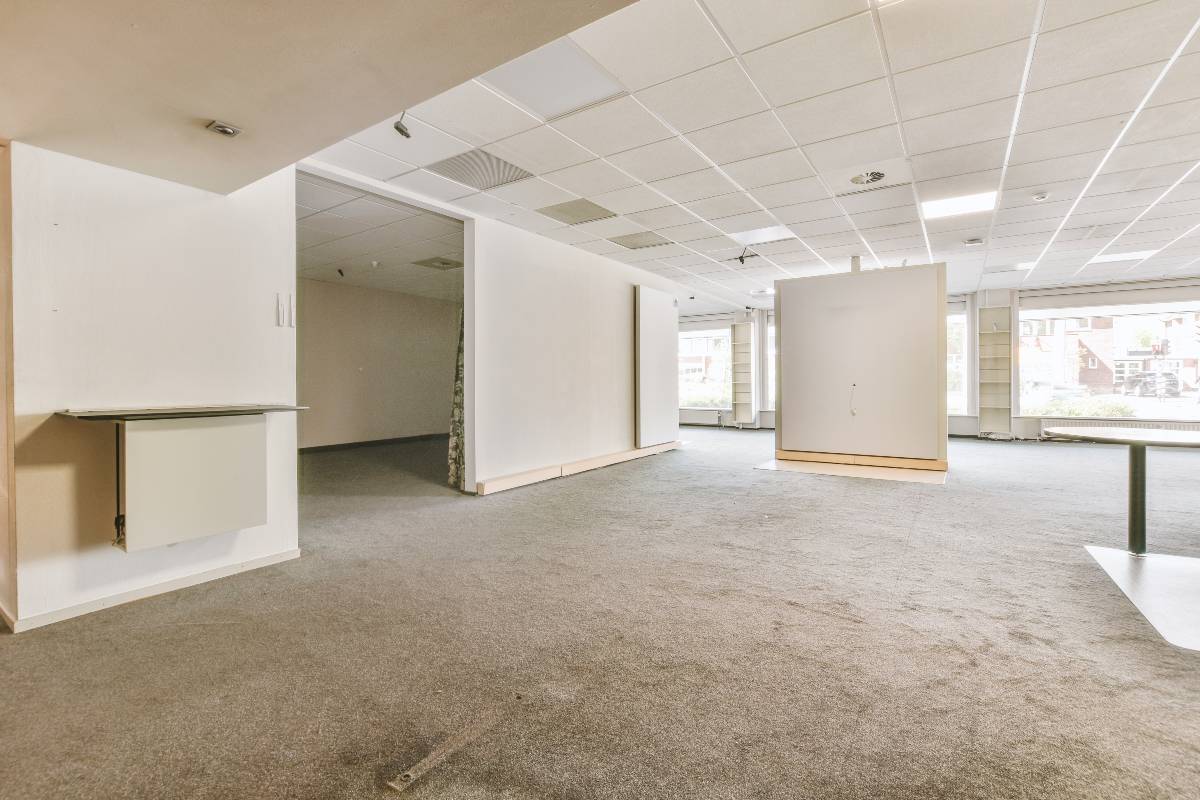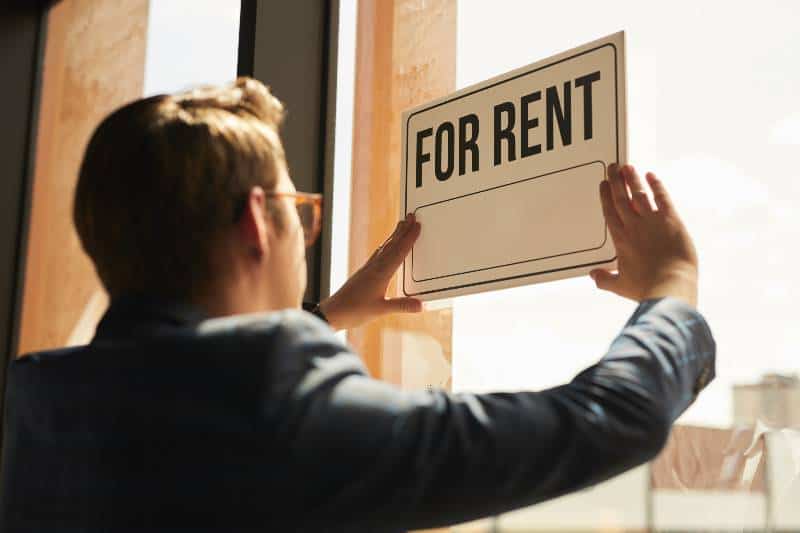Empty offices staring you down like sad puppies? It’s time to turn those vacant spaces into money-making machines. As a seasoned commercial real estate pro, I’ve seen firsthand how adaptive reuse and flexible workspace solutions can breathe new life into underutilized properties. From coworking hotspots to mixed-use marvels, we’re about to explore innovative strategies that’ll have your real estate working overtime. Ready to unlock hidden value and stay ahead of the curve? Let’s dive into the world of monetizing underutilized commercial space!
Key Takeaways
- Adaptive reuse and flexible workspace solutions offer promising opportunities for monetizing underutilized commercial space
- Implementing sustainable practices and integrating smart technologies can significantly enhance the value and appeal of repurposed spaces
- Successful monetization strategies require navigating regulatory challenges, leveraging financial incentives, and creating engaging community-focused environments
Understanding the Landscape
Before we start swinging sledgehammers and rearranging furniture, let’s take a bird’s eye view of the current commercial real estate scene. It’s like a game of Monopoly, but with real money and fewer chances to collect $200 for passing Go.
Current trends in commercial real estate
The commercial real estate market is about as predictable as a cat on catnip. We’ve got office vacancy rates doing the cha-cha, retail spaces transforming faster than a Transformer on Red Bull, and industrial properties becoming the belle of the real estate ball. It’s a wild time to be alive, folks!
Factors contributing to underutilization
Now, why are we seeing more empty spaces than a dentist’s waiting room on a Friday afternoon? A few culprits are at play:
- The rise of remote work (thanks, Zoom!)
- Changing consumer behaviors (goodbye, mall rats; hello, online shoppers)
- Economic uncertainties (cue dramatic music)
The impact of hybrid work models
Remember when “hybrid” just meant a fancy car? Now it’s the buzzword du jour in the workplace. Hybrid work models are shaking things up like a bartender with a new cocktail recipe. Companies are rethinking their space needs faster than you can say “You’re on mute!”
Market demand for flexible workspace solutions
Here’s where things get interesting. While traditional office spaces are playing musical chairs, flexible workspace solutions are hotter than a fresh cup of coffee on a Monday morning. People want options, variety, and the ability to work in their pajamas (but maybe not all at the same time).

Strategies for Monetization
We’re not just filling space; we’re creating experiences, folks!
Coworking and flexible workspace conversion
When coworking spaces were just for hipsters and tech startups? Well, times have changed, my friends. Coworking environments are now the cool kids on the block, and everyone wants in. Here’s why they’re winning:
- Flexibility (because commitment is scary)
- Community vibes (water cooler gossip is back, baby!)
- Amenities galore (hello, free coffee and ping pong tables)
Event space and short-term rentals
Do you have an empty office that’s collecting more dust than a vintage record store? Time to party! (Professionally, of course.) Transform that space into an event venue or offer it up for short-term rentals. Think corporate retreats, workshops, or even the occasional interpretive dance performance (hey, I don’t judge).
Commercial-to-residential conversion
Who says you can’t live where you work? Commercial-to-residential conversions are hotter than a New York pizza oven. Picture this: loft apartments with exposed brick, high ceilings, and a history that’s cooler than your average suburban home. It’s like “The Office” meets “Friends,” but with better real estate value.
Mixed-use development
Why settle for one type of space when you can have it all? Mixed-use developments are like the buffet of real estate – a little bit of everything for everyone. Retail is on the ground floor, with offices above and residential units on top. It’s a vertical community that would make the Jetsons jealous.

Niche-specific transformations
For those spaces that need a little extra love, consider these niche transformations:
- Office-to-logistics conversions: Because sometimes cubicles need to make way for cardboard boxes
- Retail space repurposing: From clothing racks to climbing walls, the possibilities are endless
Overcoming Regulatory Challenges
Alright, let’s tackle the elephant in the room – regulations. I can almost hear the collective sigh. Don’t sweat it. We’re about to become regulatory ninjas, slicing through red tape like it’s made of butter.
Trust me, by the time we’re done, you’ll be navigating zoning laws and building codes with the finesse of a seasoned politician at a fundraiser. So, grab your metaphorical machete, and let’s hack our way through this jungle of rules and restrictions!
Zoning restrictions and reforms
Zoning laws can be trickier than a Rubik’s Cube, but don’t let that scare you. Many cities are waking up and smelling the coffee, implementing zoning reforms to make adaptive reuse easier. It’s like they finally realized that a vibrant, mixed-use neighborhood is more fun than a bunch of empty buildings.
Building codes and adaptive reuse ordinances
Building codes are the party poopers of the real estate world, but they’re catching up to the times. Adaptive reuse ordinances are popping up like daisies, making it easier to transform old spaces without sacrificing safety. It’s a win-win!
Parking requirements and transit-oriented development
Remember when the number of parking spaces was more important than the actual building? Those days are going the way of the dinosaur. Transit-oriented development is the new cool kid on the block, emphasizing walkability and public transportation over parking lots. Your car might be sad, but your tenants (and the environment) will thank you.
Streamlined approval processes
Cities are finally realizing that time is money, and they’re streamlining approval processes faster than you can say “rubber stamp.” It’s like they’ve discovered the magic of efficiency – who knew?
Financial Considerations
Alright, let’s talk turkey. Or in this case, let’s talk Benjamin Franklins.
Cost-benefit analysis of conversion projects
Before you start swinging that sledgehammer, let’s crunch some numbers. A good cost-benefit analysis is like a crystal ball for your wallet. Consider:
- Renovation costs (because nothing in life is free, especially in real estate)
- Potential revenue streams (show me the money!)
- Long-term market trends (because we’re not just here for a good time, we’re here for a long time)
Funding options and tax incentives
Uncle Sam and his local cousins might actually want to help you out here. Tax incentives for adaptive reuse projects are like finding money in your old jeans – unexpected and delightful. Look into:
- Historic preservation tax credits (because old is the new)
- Energy efficiency incentives (save the planet, save some cash)
- Local economic development grants (because sometimes cities like to play Santa Claus)
Risk assessment and return on investment
Let’s be real – every investment comes with risk. But with great risk comes great potential reward (I think Spider-Man’s uncle said something like that). Assess your risks carefully, but don’t let fear paralyze you. A well-planned adaptive reuse project can offer returns juicier than a perfectly ripe peach.
Long-term property valuation
Think long-term, folks. A successfully repurposed property isn’t just a quick flip; it’s a long-term value play. It’s like planting a tree – you might not see the fruits immediately, but give it time, and you’ll have a whole orchard.
Sustainability and Environmental Impact
Let’s get green, and I’m not just talking about money!
Green building practices in adaptive reuse
Green building practices aren’t just good for the environment; they’re good for your bottom line. Think energy-efficient windows, sustainable materials, and systems smarter than your average bear. It’s like giving Mother Nature a big, eco-friendly hug.
Energy efficiency improvements
Upgrading to energy-efficient systems is like putting your building on a diet – it slims down the energy bills and makes everyone feel good. LED lighting, smart HVAC systems, and improved insulation are the superfoods of the building world.
Reducing carbon footprint through repurposing
Here’s a fun fact: repurposing an existing building is often more environmentally friendly than building from scratch. It’s like the “reduce, reuse, recycle” mantra, but for real estate. Your project could be saving the planet, one repurposed conference room at a time!
Technology Integration for Space Optimization
Welcome to the future, where buildings are smarter than some of my old classmates!
Smart building technologies
Smart building technologies are like having a genius personal assistant for your property. They can control lighting, and temperature, and even tell you when the coffee machine needs refilling (okay, maybe not that last one, but we can dream).
Space utilization analytics and IoT sensors
IoT sensors and analytics are the Sherlock Holmes of the real estate world – they observe everything and help you make brilliant deductions. They can tell you which spaces are being used, when, and how often. It’s like having X-ray vision for your building.
Digital platforms for space management and booking
Gone are the days of paper logbooks and confusing spreadsheets. Modern space management platforms make booking a conference room as easy as ordering a pizza. Your tenants will thank you, and you’ll wonder how you ever lived without it.
Implementing Successful Monetization Projects
Time to put all this knowledge into action!
Partnering with workspace aggregators and platforms
Workspace aggregators are like the matchmakers of the flexible office world. They connect your space with people who need it, faster than you can say “hot desk.” It’s a great way to fill those empty nooks and crannies.
Marketing strategies for attracting tenants
In the world of repurposed spaces, if you build it, they might come – but only if they know about it. Get creative with your marketing:
- Host open houses
- Leverage social media
- Partner with local businesses (because teamwork makes the dream work)
Amenities and community-building initiatives
Remember, you’re not just selling space; you’re selling an experience. Think beyond the basics:
- Rooftop gardens
- Fitness centers
- Community events
Addressing unique challenges of different property types
Every building has its quirks, like that uncle who insists on wearing socks with sandals. Embrace the uniqueness and turn challenges into selling points. That weird corner space? Perfect for a meditation room!
As a commercial real estate broker, I’ve seen firsthand how adaptive reuse projects can breathe new life into outdated spaces.
Between 2021 and 2024, we’ve witnessed a surge in office-to-multifamily conversions, with projects expanding from 12,100 units to over 55,000, as highlighted in a recent RentCafe report.
This trend is especially prominent in cities with an abundance of vacant office buildings, with Washington, D.C. leading the charge with 5,820 units in development, followed by New York City with 5,215 units.
One notable project is the conversion of the 22-story office tower at 25 Water Street in New York’s Financial District. Developers GFP Real Estate and Metro Loft Management are transforming the 1.1-million-square-foot building, originally built in 1969, into a 1,263-unit apartment complex.
Overlooking both lower Manhattan and New York Harbor, the property sits on a sprawling 2-acre area surrounded by parks and plazas. With a $538 million loan secured by Newmark, this venture stands as one of the largest office-to-residential conversions in U.S. history.
The units, ranging from studios to four-bedroom apartments, will feature 12-foot ceilings—a nod to the building’s original design.
The development will offer an impressive array of amenities, including a basketball court, steam room, indoor and outdoor pools, a sports simulator, coworking spaces, and a landscaped rooftop terrace.
While new multifamily constructions may be slowing, the pipeline of adaptive reuse projects has reached record levels, reshaping urban landscapes across the country.
Future Outlook
The outlook is promising, with a clear shift towards flexibility, sustainability, and community-focused spaces. We’re seeing the lines between work and leisure environments blur, creating more dynamic, multi-use properties.
Technology is set to play an even more crucial role. Smart building systems, IoT sensors, and AI-driven space management tools will likely become standard, optimizing usage and enhancing user experience.
The commercial real estate landscape is evolving rapidly, but with this change comes exciting opportunities. Adaptive reuse will continue to be a key strategy, transforming underutilized spaces into vibrant, profitable assets.
In conclusion, the future belongs to those who can adapt and innovate. By embracing these trends and technologies, property owners and investors can position themselves at the forefront of the industry, turning challenges into lucrative opportunities. The potential is there – it’s up to us to seize it.
FAQs
How can I monetize my underutilized office space?
What are the benefits of monetizing unused office space?
What types of spaces can I repurpose to generate revenue?
How does leasing my unused office space impact my business?
Why do I need a commercial real estate agent to monetize underutilized space?
Conclusion
As we wrap up our journey through the world of monetizing underutilized commercial space, I hope you’re feeling as excited as I am about the possibilities. The commercial real estate landscape is changing, no doubt about it. But change isn’t something to fear – it’s an opportunity to innovate and grow.
Every empty office, dusty warehouse, or forgotten retail space has the potential to become something extraordinary. Whether it’s a bustling coworking hub, a mixed-use community centerpiece, or something we haven’t even thought of yet, the power to transform these spaces is in our hands.
I’ve seen firsthand how adaptive reuse can breathe new life into properties and communities. It’s not just about making money (though that’s certainly nice); it’s about creating spaces where people want to work, live, and spend time. It’s about building the future of our cities and towns.
So, what’s your next move? Maybe you’ve got a property that’s been giving you headaches, or perhaps you’re eyeing an investment opportunity but aren’t sure how to maximize its potential. Whatever your situation, I’m here to help.
Let’s chat. No pressure, no sales pitch – just a conversation about your property and its possibilities. With nearly two decades in this industry, I’ve seen it all, and I’d love to share some insights that might help you unlock the hidden value in your real estate.
Schedule a consultation with me. Let’s set up a time to talk through your specific situation and brainstorm some ideas. Who knows? That underperforming property might just become your next big success story.
In the world of commercial real estate, today’s challenge is tomorrow’s opportunity. Let’s seize it together.




